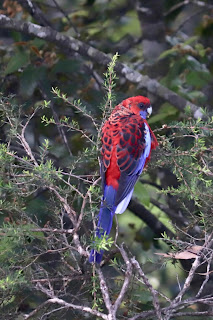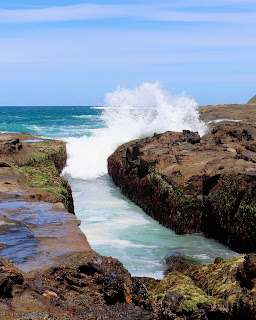The Blue Mountains National Park is a World Heritage Area encompassing one million hectares (2,471,054 acres) just 90 minutes west of Sydney. It is an exceptionally beautiful area of deep valleys, vast tablelands, and dramatic sandstone escarpments covered in thick eucalypt forest.
Kedumba Walls
It is home to many rare and ancient species, both plant and animal, and a range of habitats from dry and dusty woodlands to wet and fecund rainforests. Though these birds are not rare, they are certainly exotic and beautiful to a couple of Minnesotans.
Sulfur Crested Cockatoo
This New Holland Honeyeater seemed to be posing for me or at least was interested in the sound of my camera shutter, resulting in some neat shots.
A pair of Crimson Rosellas came to feed in the backyard of the
house where we are staying. What a beautiful parrot.
Finely dispersed droplets of Eucalyptus oil from all the trees combined with small particles of dust act as a sort of prism and create a distinctive blue haze across the area, hence the name, Blue Mountains.
We’ve seen a few other interesting animals (or at least their nests).
Dave and a large termite mound
Eastern Water Skink
Boulengers Skink
Swordgrass Brown Butterfly






















































